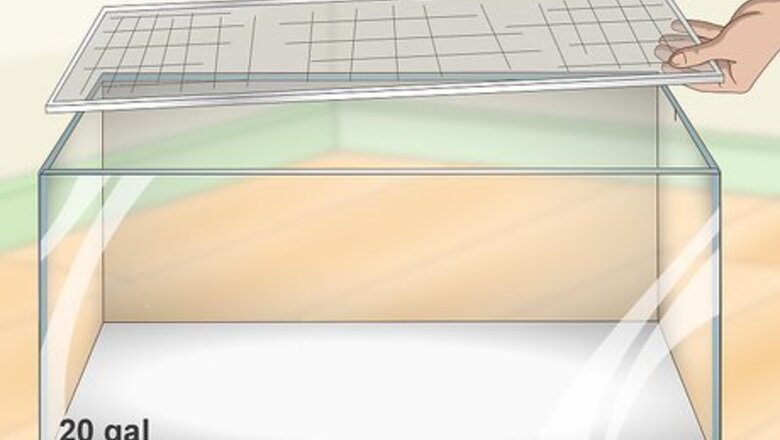
views
X
Research source
If you’re considering getting a gray tree frog, or if you already have one, there are steps you can take to ensure that your pet will live a healthy and happy life, like setting up a suitable habitat, getting live insects for your frog’s meals, and keeping your frog’s environment warm and humid.
Setting up a Habitat
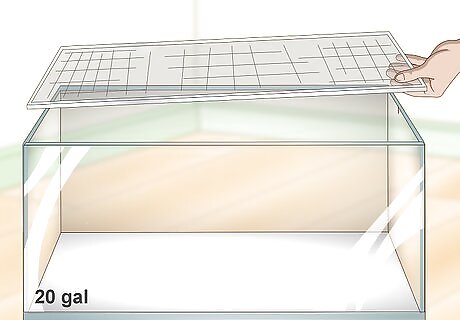
Get a 20 US gal (76 L) aquarium to house your frog in. A glass aquarium of this size will give your gray tree frog plenty of room to roam. Make sure the aquarium you get comes with a secure screen on the top so your frog isn’t able to escape. You can find an aquarium tank at your local pet store, or you can order one online. When you’re choosing a spot for your gray tree frog’s aquarium, make sure it’s not in direct sunlight since too much sunlight can cause your frog to overheat. You should also try to place the aquarium in a quiet location since loud noises, like the sound of a TV, can be disruptive to gray tree frogs.

Line the bottom of the aquarium with a frog-friendly substrate. Substrate is any kind of material used to line the bottom of a tank or cage. For your gray tree frog, use coconut husk fiber or a soil mixture as a substrate, which you can find at your local pet store or online. You can also use moist paper towels, although they might not look as natural as a fiber or soil substrate. Avoid using gravel, bark, or reptile cage carpeting as a substrate since they could cause health problems for your gray tree frog and they won’t maintain the proper moisture level in the aquarium. If you use paper towels as a substrate, dampen them with spring water and not distilled water to avoid potential health problems for your frog.
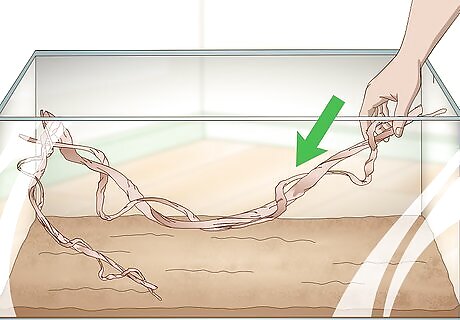
Put multiple perches and branches in the aquarium for your frog to climb on. In the wild, gray tree frogs spend most of their time in trees (that’s where their name comes from), and you should recreate this environment in the tank so your frog feels at home. You can use things like driftwood, bamboo poles, cork bark tubes, and even PVC pipe as perches and branches. Spread them out in the cage and lean some against the sides of the aquarium so your frog can explore and rest at different levels. You can find things to use as perches and climbing branches online or at your local pet store.

Add fake or live plants to the aquarium to provide shelter for your frog. Wild gray tree frogs rely on the canopies of the trees they climb to shelter them and give them a place to hide. Adding plants to your frog’s aquarium can replicate this. Try to position the plants so they’re covering the perches and branches in the tank, which will give your frog places to hide out when it’s climbing around. You can purchase fake plants for your frog’s aquarium online or at your local pet store.Choosing live plants: If you decide to put real plants in your frog's aquarium, get them from a supplier that doesn’t use pesticides since pesticides can be unsafe for gray tree frogs. You should also choose plants that will thrive in a humid environment since you’ll need to keep the humidity levels in your frog’s tank high.
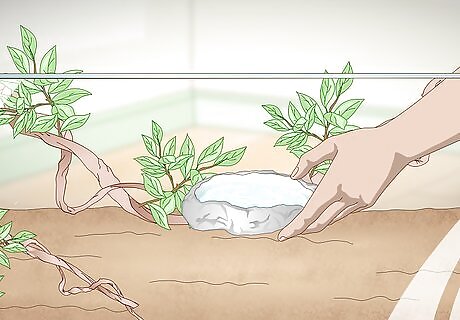
Place a small water bowl in the tank for your frog to soak in at night. Although gray tree frogs spend most of their time climbing branches, they still need access to fresh water to soak in. Use a bowl that’s shallow and small enough for your frog to easily climb in and out of, but make sure it’s big enough for your frog to fully submerge itself in. After you place the bowl in the aquarium, fill it with spring water or dechlorinated water. Avoid using tap water that hasn’t been dechlorinated since it’s not safe for gray tree frogs. You can buy dechlorinating tablets online or at your local pet store so you can treat tap water to use in your frog’s soaking bowl.
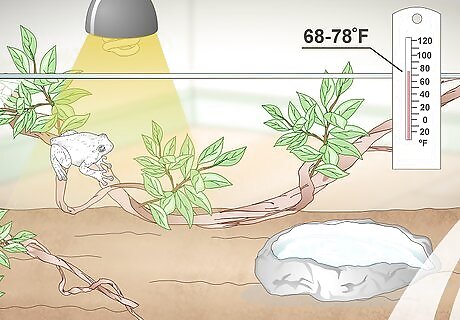
Keep the temperature in the aquarium around 68–78 °F (20–26 °C). Gray tree frogs can survive a wide range of temperatures, but you should try to keep the tank within this 10-degree range so your frog is comfortable. Unless you live in a cold climate, you shouldn’t need to use a heat lamp to maintain the right temperature. However, if you’re worried about your frog getting cold, you can set up a low-wattage heat lamp over one side of the cage so your frog can move to that side if it’s feeling chilled. Attach a thermometer to the tank to monitor the temperature. If it’s too hot in the tank, move it to a darker, cooler area. You can get a low-wattage heat lamp at your local pet store or online.
Feeding Your Gray Tree Frog
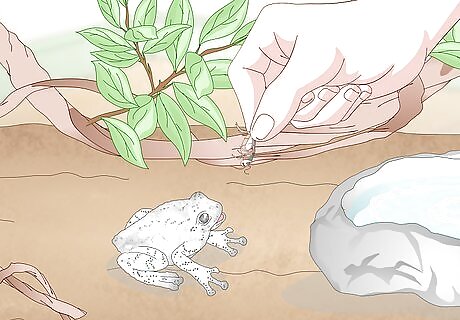
Feed your gray tree frog live crickets and occasionally other insects. Gray tree frogs prefer live, soft-bodied insects. For most feedings, you should give your frog live crickets. However, every few feedings, you can supplement its diet with other live insects, like moths, flies, and silkworms. You can purchase live crickets and other insects at your local pet store.
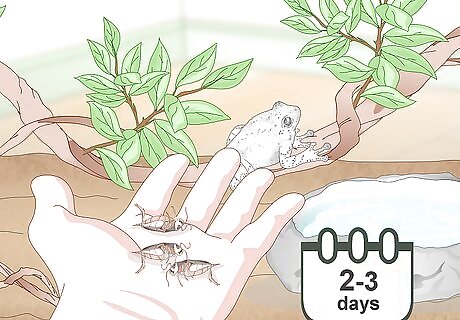
Feed your frog 3-6 insects every 2 or 3 days. The exact amount and frequency at which you should feed your frog will depend on its appetite and how much it weighs. Gray tree frogs generally have a large appetite and are prone to obesity if they’re fed too much. Therefore, it’s important that you monitor your frog’s weight and adjust how much you’re feeding it accordingly.Feeding juvenile gray tree frogs: If you have a juvenile frog that hasn't fully metamorphosed into an adult yet, you should feed it 3-6 insects every day instead of every 2-3 days. Juvenile gray tree frogs need more food than adults since they're still growing.

Use supplements every other feeding so your frog gets all of its nutrients. Use high-quality vitamin and mineral supplements that are specifically made for amphibians, which you can find at your local pet store or online. These supplements come in powder form, and you can sprinkle them on live insects before introducing them to your frog’s aquarium. Carefully follow the instructions on any supplements before you use them so you know how much to use. If you have a juvenile gray tree frog, use powder supplements for every feeding instead of every other one.
Keeping Your Frog Healthy and Happy

Mist your gray tree frog and its aquarium with water every day. Gray tree frogs thrive in high humidity levels, so it’s important that you keep your frog’s aquarium humid by lightly misting it with water once a day. You should also lightly mist your gray tree frog with water since gray tree frogs stay hydrated by absorbing water through their skin. To mist your frog and its tank, you can use a mist spray bottle filled with spring water or dechlorinated water.Tip: If you live somewhere with low humidity levels, you may want to attach a hygrometer (a device that measures humidity) to your frog’s aquarium so you can monitor how humid it is. Generally, you should aim to keep the tank at around 60 percent humidity.
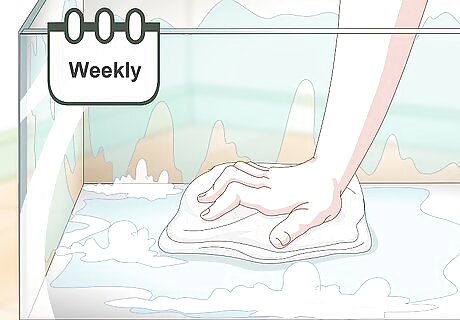
Clean your frog’s aquarium once a week. Regular cleanings will help prevent your frog from getting sick. To clean out its aquarium, carefully transfer your frog to a separate container that it won’t be able to escape from. Then, replace the substrate at the bottom of the tank with fresh, clean substrate, and remove any uneaten insects and debris in the tank. Next, take out the perches and any fake plants and scrub and rinse them with water to clean them off. You should also replace the water in your frog’s soaking dish with fresh spring or dechlorinated water. Finally, wipe down the inside of the tank with paper towels. Avoid using any cleaners other than water since they’re not safe for gray tree frogs.
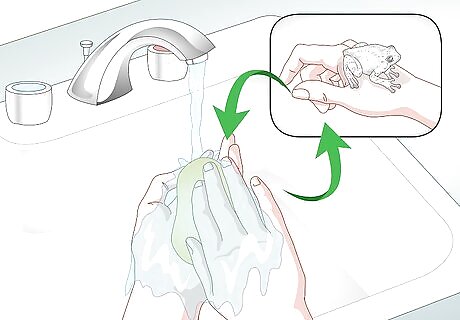
Wash your hands before and after handling your frog. Generally, it’s best to only handle your gray tree frog if absolutely necessary, like when you’re moving it to a separate container to clean its tank. When you do handle your frog, it’s important that you wash your hands first so you don’t transfer any oils or potentially toxic substances to your frog’s skin. You should also wash your hands after handling your frog since gray tree frogs secrete a toxin that can cause extreme discomfort if it makes contact with your eyes, mouth, or nose, as well as any cuts or abrasions you have.
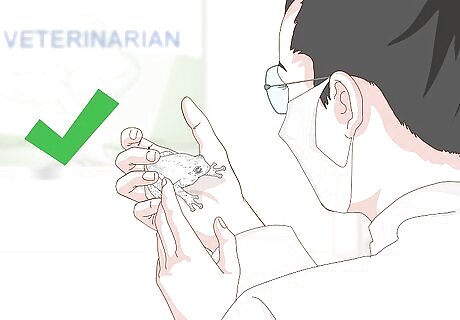
Take your frog to a vet if you notice signs of health problems. All captive amphibians are susceptible to health issues that can range from nutritional deficiencies to infectious diseases. Therefore, it’s important that you intervene immediately and bring your frog to see a vet if you think there’s something wrong with it. A vet should be able to determine what’s wrong with your frog and prescribe the right treatment plan. Some common warning signs that there might be something wrong with your frog that you should keep an eye out for include: Inactivity Weight loss Bloating Blotchy skin Cloudy eyes Swelling












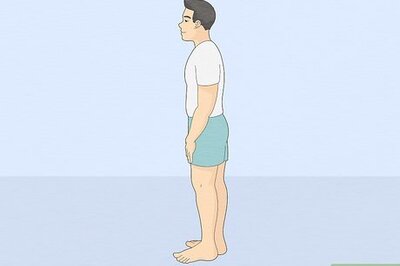





Comments
0 comment